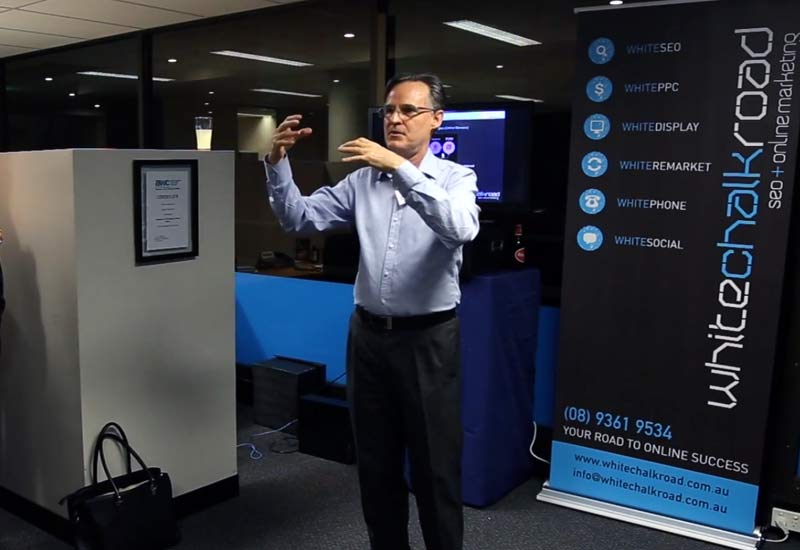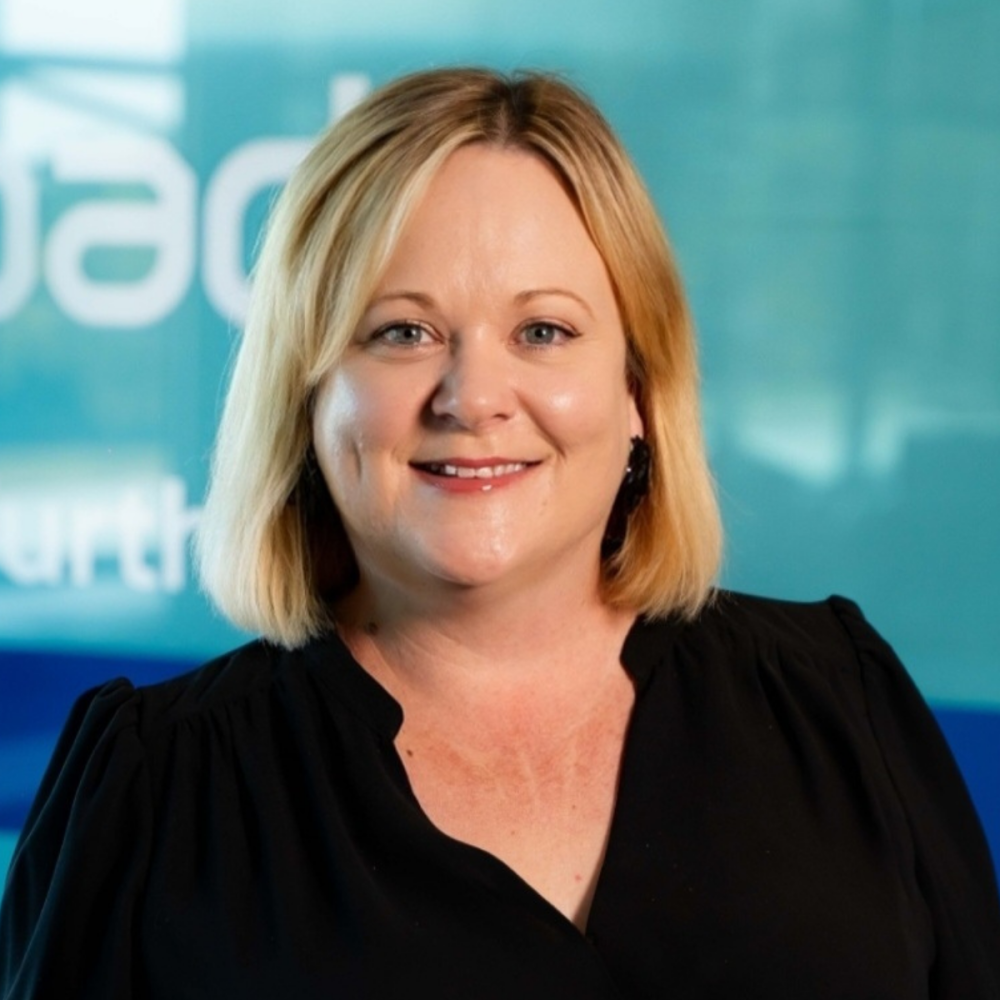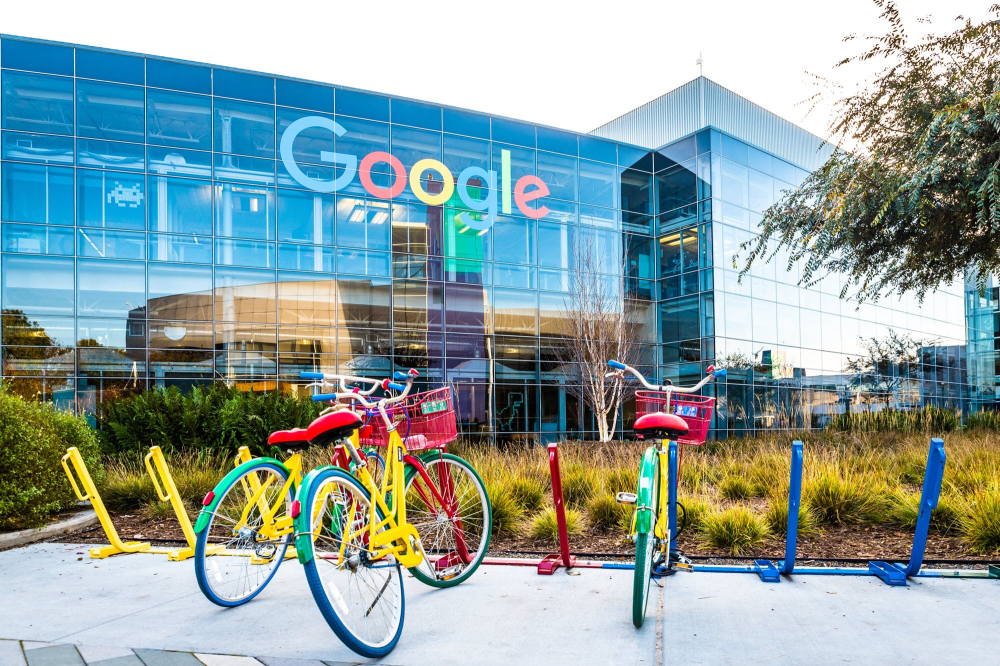
The below is taken from a speech by Charles Ryder at our recent Local Chambers event at the White Chalk Road offices in Victoria Park (2015).
The juicy bits start at 3 min 36 seconds in the video, and you can check out the transcript below, where Charles shares his top 5 content marketing tips to get right in 2015.
Developments in the Perth online marketing industry in recent years
Eight years ago now, the marketing mix was very, very different.
The marketing world was very different, as I’m sure you know. Marketing used to be mainly about printing a business card, doing some stationary. Everyone had Yellow Pages to some extent. And you might just think about a website. A lot of the people that came to us then, it was mostly a glorified online brochure. And they didn’t have much budget for SEO. It was more like a technical exercise.
What can I do to my site in order to make the search engines find me?
Fast forward eight years, the environment’s very different, isn’t it? Extremely different. What have you got?
You’ve got Google AdWords. You’ve got SEO. You’ve got Twitter and Facebook, social media, remarketing, display advertising.
So for a small business owner who’s got to run a business and keep abreast of all of that, it’s pretty hard, isn’t it? It’s a more complex world than it used to be. The only thing that’s changed is actually the consumer behaviour has changed, hasn’t it? Greatly.
So in the old days, people were fairly receptive to the broadcast ‘push marketing’.
You push out ads on the television, on the radio, and that sort of that, if you can, as an SME, afford radio ads or TV, and if you could. But these days, people like to find information for themselves, they like to consult with their peers and that sort of thing.
So they’re more into ‘pull marketing’ or inbound marketing. The environment has really changed.
When we moved here back a couple of years ago, we found out we were just inundated with work. We had a lot of people here that wanted to know about these things, who were confused. We started to give more in-depth advice to our clients.
What I’m going to do is very briefly share in five bullet points some of the ideas that I’ve learned that can succinctly give you an idea of what’s important when you want to look at your overall marketing mix. We’ve very much a holistic company. We’re not interested just purely in rankings, so this is why I want to impart these five important points.
1. The Marketing Mix
We have five tips for you today.
One of the things is about changing that marketing mix. You need to change your marketing mix according to where your audience is. These days, your audience, where is your audience? It’s online.
Only two years ago, the number of hours that people spent in front of a PC or a smartphone actually exceeded those in front of a television set.
So people are online. And now they’re moving toward smartphones. If you look at your Google Analytics, you’ll find that almost 50% of people are actually using smartphones or tablets [to visit your website].
So the audience has changed. And the nature of what they’re prepared to stomach has changed. No longer can you just put a website up and say – (and I’m sure you may have done this occasionally) – bullet points of what services you offer, and that’s good enough. “I do this. I’m the best at this.”
People want to have some value, so you’ve got to give some real value.
So it’s important to look at your mix.
Go and look at Yellow Pages [for example]. And if you’re spending money on Yellow Pages, [and maybe you see] well, that doesn’t work anymore, so I need to change my marketing mix. What you need to do is just re-evaluate your priorities in terms of the different channels that you might use for marketing.
So that’s the first point that you need to do. And what we often say is if you’re going to approach us or a web designer or somebody like that, just go back to the basics.
What are the goals you’re trying to achieve first? And only then you look at “so what channels can I achieve it through? Is my business suitable for SEO, online marketing, or for what?”
Then you have a look at what you can service by your own staff versus what you can outsource and what advice you need, and obviously get some idea of the budget that you got for exposure, and then approach a service provider.
2. Content Marketing
Okay, so we want to spend more money online. But these days, my next tip is to make sure that your content [marketing is on point] and not so much ‘traditional SEO’. Has anyone heard the term content marketing before?
It’s a new buzzword — content marketing.
As I said, you really need to add some value. You really need to tell people, if you’re doing bamboo floors or something, you really need to describe why to choose bamboo over timber, how long is it going to last, how do I clean it, is my investment going to be all right for this, an FAQ page, a blog, or something to educate your audience and give value back.
That’s what we mean by content marketing. It’s a way of giving engaging, valuable content to a very specific target audience in an attempt to make that a meaningful interaction such that they’ll move to an ‘actionable’ – [for example] they’ll give you a call on the phone. That’s what we call content marketing.
3. Conversion Optimisation
But is it good enough to just have great content? And what I’m talking about is to just put a blog up on your site for example. Or maybe it’s an article published in an industry blog of some sort. Or maybe it’s blog comments, maybe it’s an editorial thing in the West.
But is it good enough to just have the content out there?
No, not just good enough. So what you need to do is to make sure that when you get the visitors to those sites, that you convert them effectively.
My next point is to make sure that you convert the customers that you’ve got.
The important thing here is to understand, okay, if I’ve got a website, and I want more sales leads, you can certainly spend more money on doubling your organic search. But that might cost you $20,000 or $30,000 by the time you double in a very competitive industry. But if you just change one or two things, like the colour of your button from grey to red.
Red’s passion, isn’t it?
Those little changes and the other things, calls to action and all that sort of thing (that Design City are pretty good at doing), if you lift your conversion rate from 1% to 2% of a small number of X, effectively, you go from 10 sales a week to 20 sales a week. So instead of spending $20,000 doubling your traffic, you’ve spent $500, maybe $1000 on improving your conversion rate.
And as an agency, we’re trained to look for those things and optimize your site. We use all sorts of tracking tools and heat maps and all sorts of things to refine it, and if your designer has done something for you, don’t just sit and forget it. It helps to experiment over time because little changes actually make a difference.
And before we move out of content marketing, I just want to say that content is so important because SEO and content marketing has a conversion rate that is higher than any other form of marketing.
It’s doubly more effective than, say, for example, Google AdWords and so forth, because people are looking for something. It’s not interrupt marketing. People are looking for something, they’re ready to buy or ready to research, and it converts terribly well. So it’s fairly cost-effective.
4. Remarketing
Is it good enough just to convert well? If you’re raising your conversion rates from say 2% to 5%, and you’re giving yourself a big pat on the back, fantastic. But 95% are actually leaving your site. So here’s the trick. Why don’t you follow them and bring them back? Online, you can do that. It’s called remarketing.
People visit your website, then they go somewhere else, to some other website, maybe it’s related. [For example, the potential customer is looking for] finance – loan, mortgage, they’re looking up the rates.
Later on, they go to a real estate agent’s website, and they’re looking at properties, etc. Then all of a sudden an ad pops up and says, “Are you considering a loan?”
It’s magic.
There’s something that happens on their computer and it remembers that they’ve been to your site. So if you want further questions about that, we’re happy to talk with you about how to do remarketing.
5. Channel Integration
Finally, the fifth tip for the day is: Okay, you’ve remarketed, you’ve got these people back. Is that good enough?
Make sure that those channels that I spoke of are actually integrated.
What I mean by that is to make sure that your message, your marketing message is aligned. It’s consistent across all the channels that you are marketing your business with. You’re also leveraging it.
It’s the big “AL” – align and leverage.
What I mean by leverage is, okay so you have certain messages coming out there about Valentine’s Day or whatever, make sure the keywords that are in that form of advertising are actually reflected, say, in the Google AdWords. When people do that search, what was that again, blah blah blah, pops up an ad. Just make sure that the message is aligned.
If you’re advertising for last year’s Valentine’s gift hampers or last year’s special, your messages aren’t aligned. You just need to be aware that all of your marketing needs to be integrated. Especially in this new world that I just introduced where you’ve got lots of different choices to market your business.
Finally – Inform yourself, but remember your business is unique
Finally, the stuff that you read on the internet is all very interesting and you can inform and do it yourself and we encourage you to do that.
We want a partnership. We don’t want to do all the work ourselves. We encourage you to do that.
Remember, a lot of the stuff that you read is about the generic business. It’s all about average businesses. Your business is very unique. So your marketing mix might be different.
So if you’re an accounting firm, TV ads don’t work terribly well necessarily for accounting firms. Same thing, online, some businesses promote well with this form of marketing than others. So this is where you might need some expert knowledge.
Get somebody that’s had industry experience as opposed to somebody straight out of university that have never run a business in life before. Experience is important there.
In Summary
So those are the five tips:
- Revisit as the world changes on you, the different marketing things that you do and shift your budget around accordingly
- Then bait your audience with great content
- Then, when you get them there, convert them as well as you possibly can
- When they leave, reengage them by pulling them back
- And when they come back, make sure all of the touchpoints that you’ve been pulled back, the message is uniform, the brand message is uniform, the offer is uniform. And the website looks great. It looks like similar branding, all your marketing messages and your branding are uniforms.
I hope that helps to some extent and thank you so much for listening to me.
Audience Question Time
What sort of budget would you want from us as a customer? What would we spend?
Charles:
Again, every business is unique.
Some customers have spent ten grand a month with us and others have spent as little as $800 a month. So it’s a bit like marketing in the traditional sense, how much should a company spend on marketing. It’s reaching an audience.
So a little dental place that’s got one store in Dianella only needs to spend this much. Their keywords are very localised. They’re easy to rank for, you don’t need to spend much.
Another business might have a nationwide business. They need to spend a lot more. Another one is global. They need to spend more, maybe. Again, it depends on your business. If you’re selling home loans, and you want to be number one for home loans, it’s going to cost you an arm and a leg.
If you want to be number one for a really easy keyword, that is fairly unique, you’re selling some sort of widget that nobody else sells, then your budget is small. That’s why you have to have a custom quote and do the research for any competition online before you can actually quote.
Do you have any guarantees?
Charles:
Number one or your money back (haha we’re joking)! How many emails do you get from companies in the Philippines that say we’ll get you to number one and guarantee it and all that sort of thing?
I’ll have to be honest, we don’t give those sorts of guarantees.
The reason being is it does mislead people into thinking that we have total control over a multi-billion dollar company such as Google and at any point of a tick of the clock, we can control whether you’re number one or two or three or four. We don’t have that fine control.
So it’s more about setting KPIs – about visitation and conversions over a period and coming to some expectation and a review system, but not money-back guarantees.
No money-back guarantee, but some confidence that someone that’s got 5,000 hits a month, can you guarantee that we can increase that to 20,000?
We can run the numbers such that you can see from our numbers, plus the case studies that we’ve had, you can get some idea of the high probability of meeting those targets. You also have to always caveat something so that we’re not the only one in the equation.
We like our clients to do some of the work themselves. Writing that content that I spoke of, we prefer you to write some of that content. You know the industry that you are in as much as possible.
What we do is spend our relationships and our valuable time trying to find a place to put that on the web where it serves the most benefit to you in order to get the business. So it’s a cooperative thing.
And if you don’t accept our recommendations or you have good intentions of providing us content and never get around to it, then obviously there’s another party. You go to your designer, and they take forever to make those button changes or responsive design.
With smartphones these days, if the audience is 50% smart phones and your website looks crap on a smartphone, and you expect us to double your sales, well you know… So it is an intricate process.
Alyssa Miller, Design City (White Chalk Road’s Web Design Partner):
I’ve worked with Charles for many years. I have to introduce him to clients and, of course, there are [other SEO agencies] out there that have set packages and make guarantees.
But [with those other SEO agencies who offer “ranking guarantees”] – those guarantees are not met because of the little fine print. What I’ve always found with White Chalk Road is: what they set out in their proposals, they deliver on. And clients have seen that over time. And they also customise their proposals for each client.
So I suppose, ya, you have those [agencies] that come down to [guaranteeing] a number, but [clients] always seem to come back to someone that actually knows what they’re doing and can actually deliver. And using that “guarantee” word doesn’t always work.
Charles:
Yes, and another thing – Google has, on their Webmaster [support area], a big splash page saying run away if anyone guarantees you rankings – it’s not best practice in the industry.
The other thing to note is that your business changes all the time, so if you’re locked into a guarantee that says this keyword, this keyword and this keyword must rank, then the provider is just going to spend all your budget on those keywords when they might not be converting well.
The provider is resistant to change, and you need to be changing over time, so you need something more flexible than that, you need to tweak all the time. So having a ranking guarantee and a fifty-page [terms and conditions] document in order to be able to nail that guarantee doesn’t work so much in the industry in my experience.




